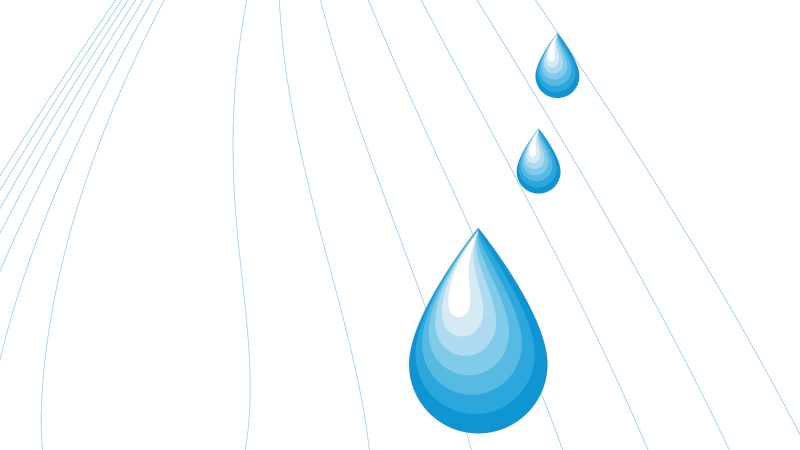

Since the start of Renaissance, great attention has been given to water resources in the Sultanate.
According to a report by United Nations, people in Oman have access to some of the best clean drinking water.
More than 98.7 per cent of the population have benefits from safe drinking water services in 2016.
Desalinated water accounts for over 86 per cent of the total drinking water needs and is considered one of the strategic options to meet drinking water requirements. Desalinated water production increased from 196 million cubic meters in 2011 to 311 million cubic meters by the end of 2018.
Other sources of drinking water, such as wells, contribute by approximately 14 per cent.
Water conservation and health experts say this is an excellent achievement showing on the part of the government, and that this number will reach 100 per cent in the very near future.
According to the First Voluntary National Review of the Sultanate of Oman 2019 prepared by the National Committee for Achieving Sustainable Development Goals, sanitation and hygiene services cover more than 98 per cent of the population in urban areas and 97 per cent in rural areas.
As of 2018, 68 wastewater treatment plants were established, producing around 94 million m3/year of tertiary treated wastewater, about 61 per cent of which is being used in agriculture, aesthetic afforestation, refrigeration, and injection of coastal aquifers.
Through the National Strategy for the Use of Tertiary-treated Wastewater 2040, Oman seeks to expand the construction of sewage treatment plants and extend sewage network lines at a cost of $7 billion, averaging $381 million per year.
Since 2014, wastewater has been collected and treated, which contributes significantly to reducing groundwater pollution and increasing the level of recycling and reuse as a growing non-traditional water source potentially totaling more than 1 million m3/day, which can be used to address water scarcity by 2040.
“Water quality monitoring programs constitute a principal cornerstone of water resources assessment and management, and the Sultanate has come a long way in this regard”, the report points out.
The country has implemented water basins monitoring programs at a coverage rate of 75 per cent through periodical measurements of monitoring points and the storage of results in a core database.
In view of the current water shortage pressure estimated at about 128 per cent, the Sultanate seeks to ensure sustainable freshwater availability and supply by 2030 by balancing supply and demand and expanding the use of non-conventional water resources (treated wastewater) currently used to replenish some coastal aquifers.
Furthermore, by implementing water demand management (WDM) policies and changing cropping patterns and traditional irrigation systems, Oman aims to increase current water use efficiency, estimated at around $47/m3 in 2018, with a focus on the agriculture sector, which is the largest water-consumer, accounting for 83 per cent of total uses.
According to the United Nations questionnaire on integrated water resources management (IWRM) implementation, the indicator placed the current degree of IWRM implementation in Oman at 38 per cent.
The Sultanate has made great progress in terms of enabling the institutional environment, national policies, legislation, and regulations, as well as national monitoring systems and funding.
According to the report, the water sector faces many challenges, foremost among which are limited natural water resources, due to the country’s location in the zone of arid and semi-arid lands and its reliance on annual rainfall for the replenishment of its limited water resources.
“This represents a challenge in terms of balancing water uses, renewable resources, and the preservation of water resources from depletion and pollution, in addition to the salinity and degradation of groundwater quality in coastal areas (Al Batinah and Salalah coastal areas)”, the report points out.
According to the 2040 Water Sector Master Plan, the Public Authority for Water is working in coordination with the Oman Power and Water Procurement Company (OPWP) to advance the implementation of desalination projects by developing plans to expand existing desalination plants and establish new plants, through private sector involvement in investment, in order to meet the growing demand for water.
Seawater desalination plants are large-scale projects which cصصصontribute significantly to enhancing Oman’s water security.
The Sultanate seeks to improve its various systems and activities; increase water supply reliability; boost operational efficiency; further upgrade services; and implement strategies to develop and enhance human resources, subscriber services, health, safety and the environment, information technology, water quality, and project management.
Moreover, a strategy was prepared to manage water loss, which brought losses down from 43.4 percent in 2010 to 23 percent in 2018. Contingency strategy and plans were also elaborated in collaboration with other stakeholders in the country.
The report hopes that the total quantity of treated water utilized will amount to around 244 million m3 and 338 million m3 by 2030 and 2040 respectively.
The National Wastewater Reuse Strategy also encompasses mechanisms and programs related to the utilization of this renewable resource in the replenishment of underground reservoirs, and for industrial and agricultural uses in order to increase water use efficiency in the Sultanate.
Oman Observer is now on the WhatsApp channel. Click here



